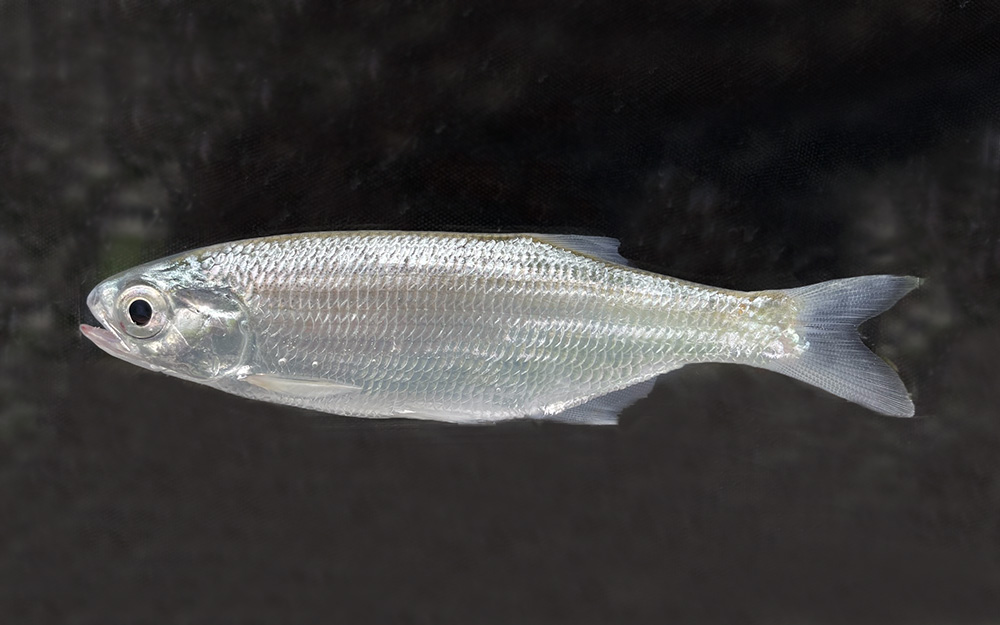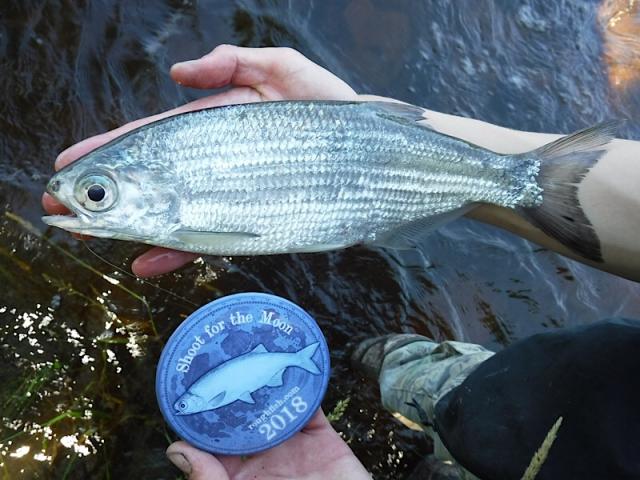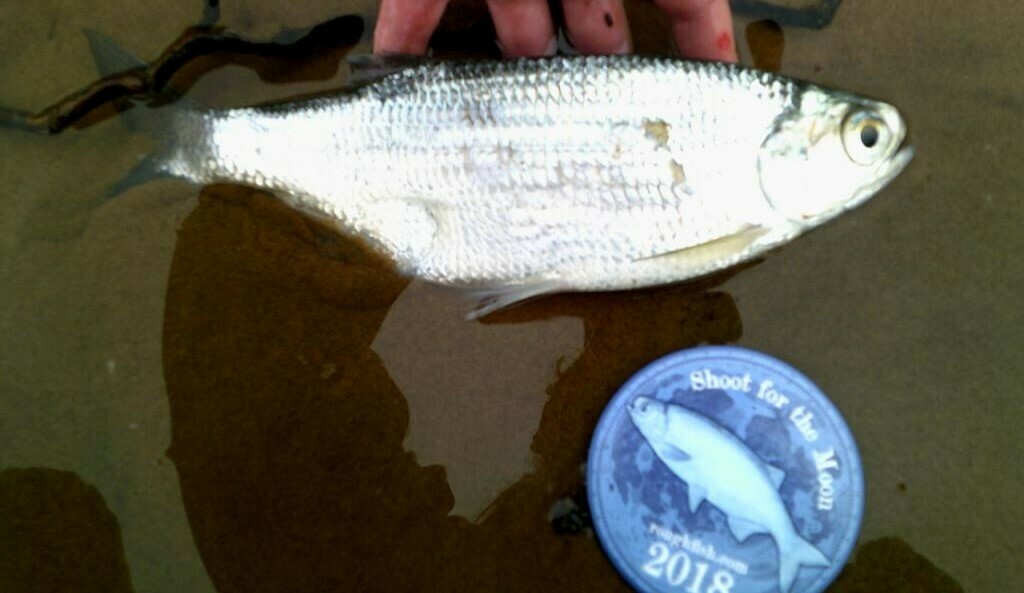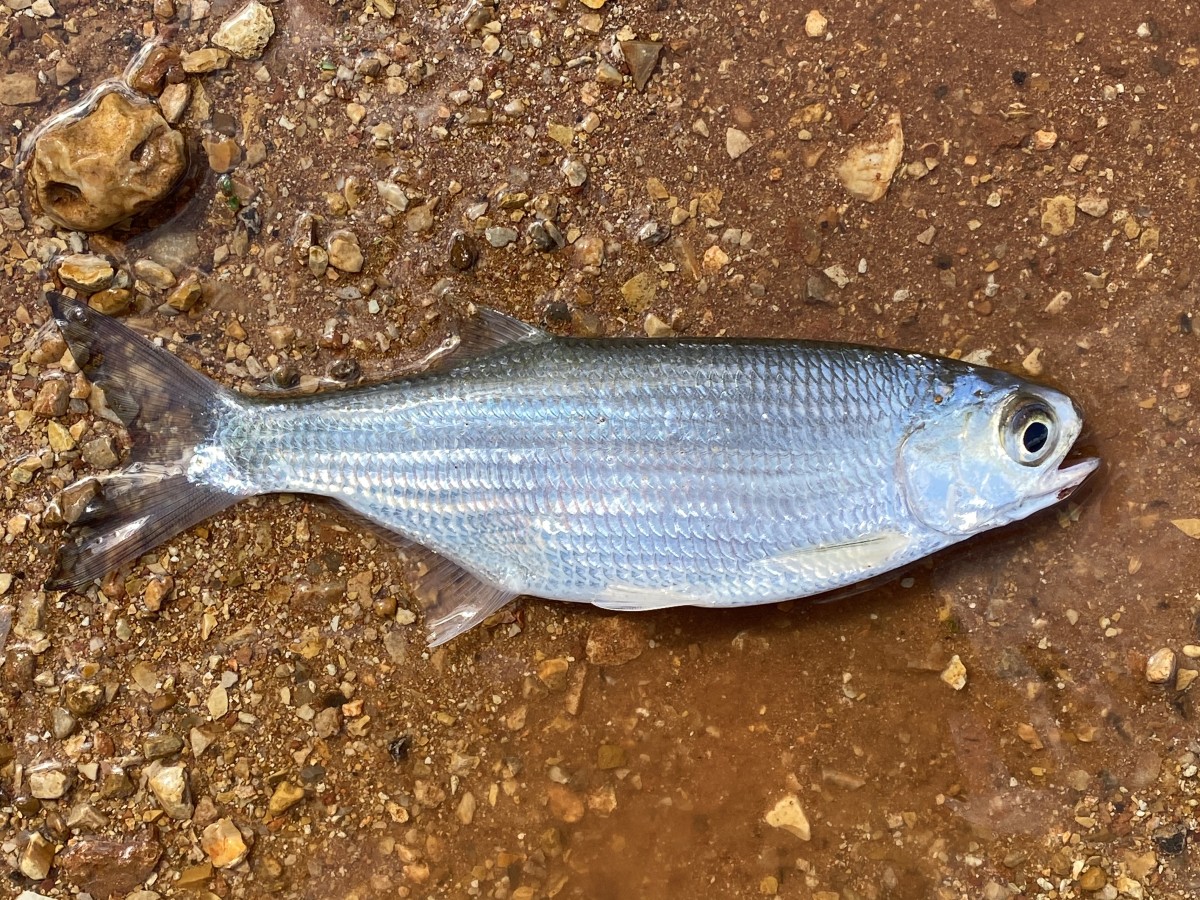Mooneye
(Hiodon tergisus)

Classification
General data
Hiodon tergisus, the mooneye, is a freshwater fish that is widespread across eastern North America.
Anatomy and appearance
H. tergisus is characterized by its silvery appearance, strongly compressed deep body, and keel that extends from its anal to pelvic fin.
Adult mooneyes reach an average length of 30 centimeters (12 in) and may reach up to 45 centimeters (18 in). They weigh an average of 220 grams (8.0 oz).
Distribution
Mooneyes are endemic to eastern North America. They can be found as far north as the Hudson Bay and as far south as the Mississippi delta. They have been found as far west as central Alberta, Canada, and as far east as the western edge of North Carolina. Historically, mooneyes have been found in all of the Great Lakes, excluding Lake Superior. Their populations in Lake Michigan and Lake Erie have been declining. Furthermore, their current distribution is becoming more confined to larger rivers, whereas historically they have inhabited much smaller tributaries. The historical distribution of H. tergisus may not be fully accurate due to the misidentification with other species, such as gizzard shad and alewifes. The difference between current and historical distributions may be due to the construction of dams that restrict fish from migrating from smaller rivers to large rivers. Factors such as climate change and pollution may also affect their distributions.
Ecology
Mooneyes inhabit clear river and lake environments. They are mostly intolerant of turbid waters and are usually active during the day. As surface feeders, they eat primarily aquatic and terrestrial insects, but they are also known to eat crustaceans, mollusks, and small fish. Young mooneyes tend to feed in more benthic regions, eating immature caddisflies, mayflies, midges, corixids, and plecopterans.
H. tergisus has latitudinal variation in growth rates in which northern populations mature faster than southern populations. This may be due to less turbidity in the northern latitudes.














